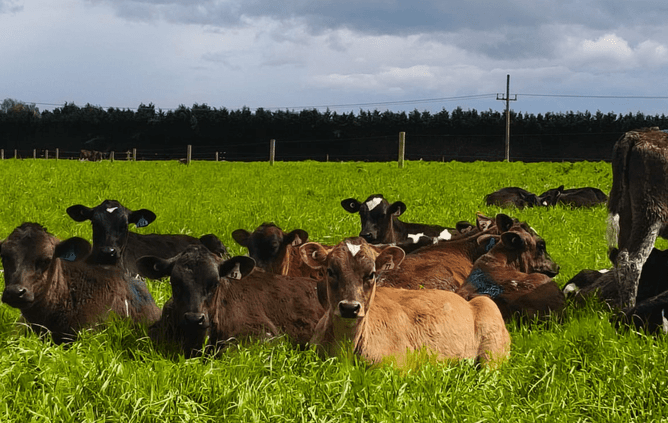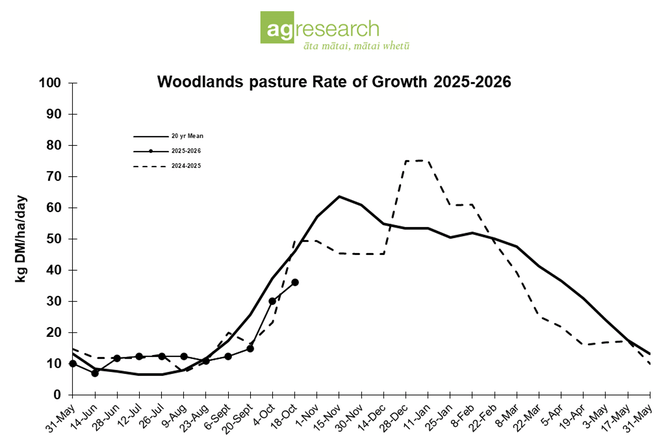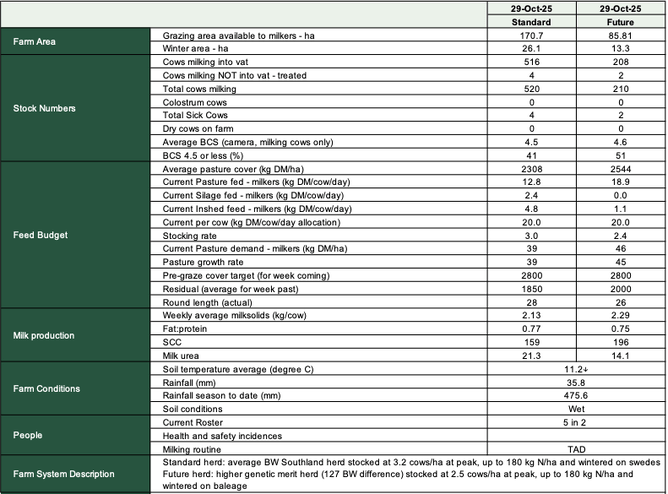Your weekly glimpse into research in action at Southern Dairy Hub.
Insights
2025-born calves were weighed this week, averaging 85.4kg with a range between 65kg and 111kg. The three dairy-beef calves we’re holding for Hospice Southland are the big guys in the mob. Heifers have been marked into three weight groups: 85kg+, 75–84kg, and 74kg and below. Once power is restored at the support block, we’ll be able to mob them accordingly and begin weaning some. For now, they’re roaming freely.
We managed to mow five paddocks this week and hope to bale in the coming days. These paddocks on the dairy platform were getting very long (over 4000kg DM/ha). While conditions are still challenging, it was decided to get the grass off so the paddocks can return to the rotation.
Pasture growth this week has been slow again (45kg DM/ha/day for Futures and 39kg DM/ha/day for the Standard farmlet). This aligns with Woodlands growth of 36kg DM/ha/day for the week of 18 October. The Woodlands 20-year mean growth is 57kg DM/ha/day, so the region remains well below average for the last few weeks. Warmer temperatures forecast for next week should help turn this around quickly. For those keen to see the full set of pasture growth data, please contact AgResearch scientist Chris Smith at chris.smith@agresearch.co.nz to be added to the distribution list.
Crop cultivation has also started this week. Great to have the DT Contracting team on farm. We’ll be planting swedes and kale for the Standard farmlets. The Future herd will again be wintered on grass and baleage, using Supercruise Italian ryegrass (PGG Wrightson Seeds) to conserve baleage through the season and graze during winter. This pasture has performed very well, producing top-quality baleage and contributing to BCS gains through the winter for the Future herd.
Mating of the dairy cows begins Monday. CIDRs were inserted into 34 cows this week (those not yet cycled, calved more than 42 days, aged 2-6 years, and positive BW). We plan a four-week mating period for AB replacements, then move to beef/short gestation. This is possible as our heifers have already been mated to AB semen and we’re also using sexed semen across both farmlets.
Future herd: all mated to AB replacement semen (4 weeks) – highest genetic merit, +127 BW over Standard herd.
Standard herd: 30% of lower-BW cows mated to beef and the rest to AB replacement semen (4 weeks).
This strategy increases the number of dairy-beef calves for market and fits our Non-AB Replacement approach. Carefully selected beef bulls ensure compatibility with dairy cows and a valuable product for the dairy-beef value chain. If we see concerns with submission rates at week three, we’ll consider extending the AB replacement mating period.
Given the challenges of recent extreme weather, ongoing power outages across parts of the farm, damaged repeater stations, and the different systems we use for API integration, we have decided to also tail paint the cows this season. We will monitor mating performance closely over the next two weeks and may move back to full reliance on technology once things are back to normal. It’s such an important time of the year, and one we all want to go well.
Standard
Average BW Southland herd stocked at 3.2 cows/ha at peak, up to 180 kg N/ha and wintered on swedes.




